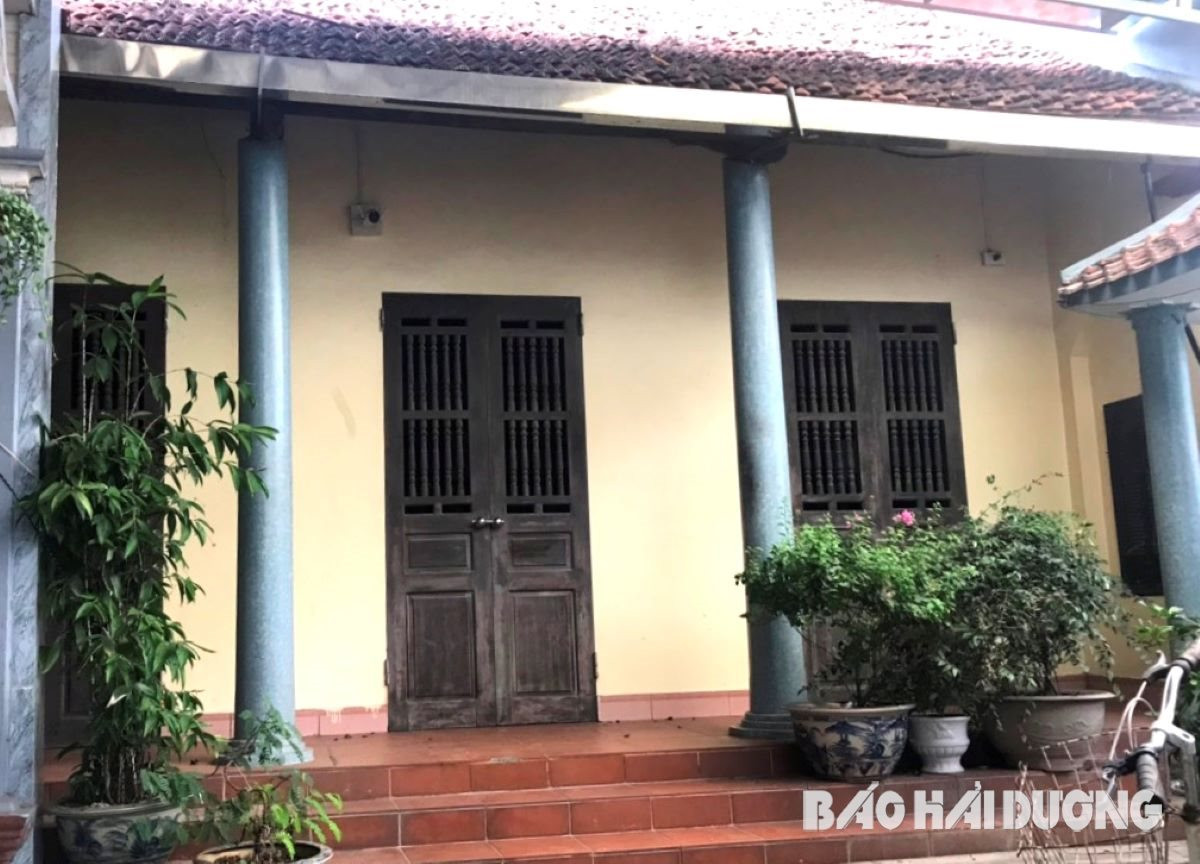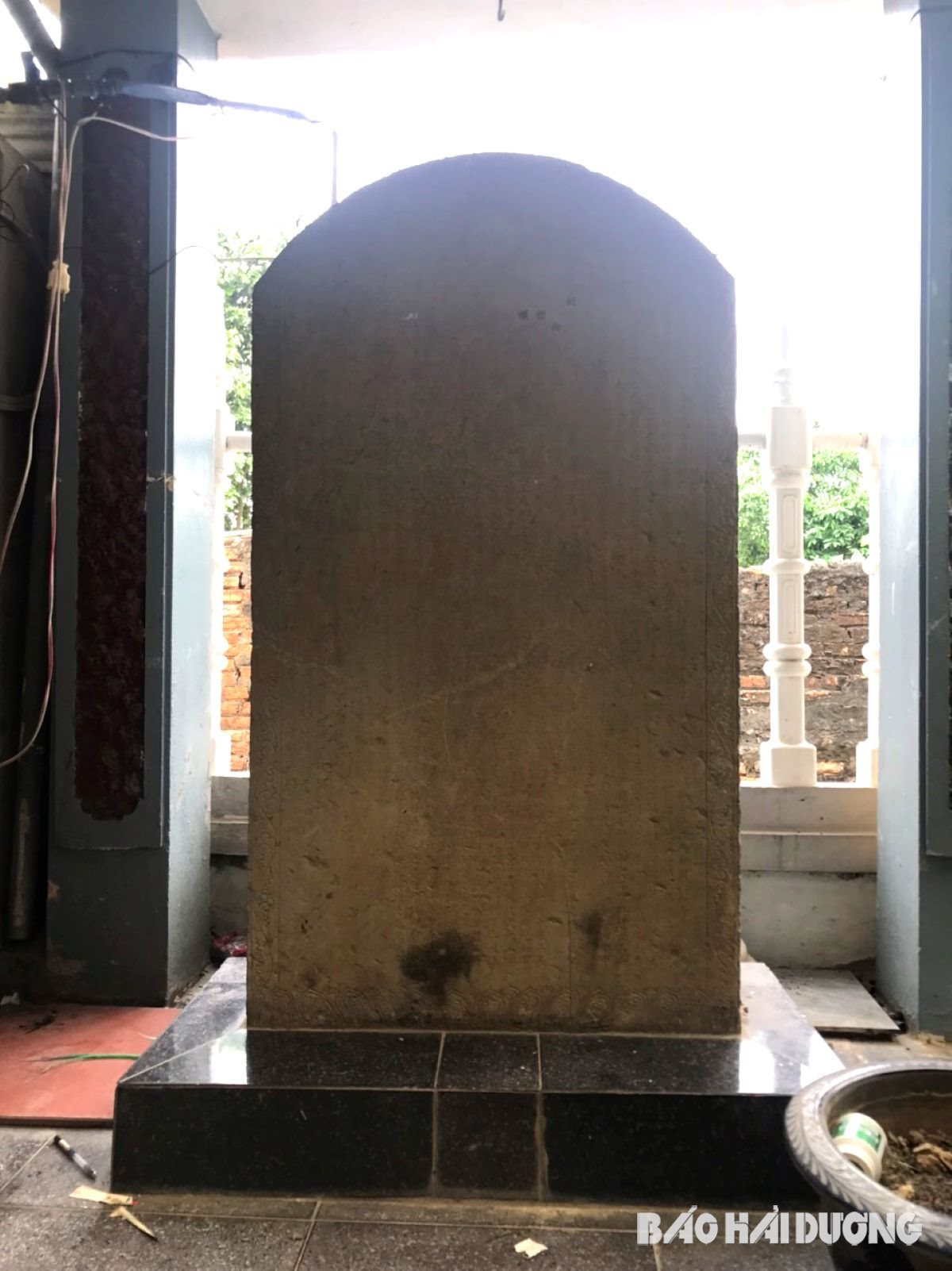The Le family in Mo Trach village, Tan Hong commune (Binh Giang, Hai Duong) has four father and son Le Canh Tuan who all contributed to helping the country defeat the enemy, shining examples of loyalty and filial piety for future generations to follow.

The Le family is one of the two major families of Mo Trach village, which came here to settle down quite early. According to “Le family genealogy” (translated and annotated by Nguyen Van Nguyen), the ancestor of the family was Le Huu Huy, from Lao Lat, Thuan Loc district, Ai Chau (Thanh Hoa). His son was Le Nhu Du, who married a woman from Mo Trach village and moved to his wife’s hometown to live. Le Nhu Du gave birth to Le Canh Tuan, whose courtesy name was Tu Muu, who passed the Thai Hoc Sinh exam (equivalent to a doctorate) in the Tan Dau year (1381) of the Tran Phe De dynasty. There are documents stating that Le Canh Tuan passed the Thai Hoc Sinh exam in the Canh Thin year (1400) of the Ho dynasty with Nguyen Trai.
In 1400, Ho Quy Ly usurped the throne of the Tran Dynasty, ascended the throne himself, and established the Ho Dynasty. Le Canh Tuan and his close friend Bui Ba Ky opposed the Ho Dynasty and supported the Tran Dynasty. The two men went to Yen Kinh (Beijing, China) to present a petition to the Ming Emperor to send troops to attack the Ho Dynasty and establish the descendants of the Tran Dynasty as kings.
In 1406, the Ming Dynasty used the excuse of "supporting Tran and destroying Ho", and sent Truong Phu, Moc Thanh, and Hoang Ngu Phuc to lead troops to attack and capture Ho Quy Ly and his son. From then on, the Ho Dynasty fell, and the whole of Vietnam fell under the rule of the Ming Dynasty. Having made great achievements, Bui Ba Ky was appointed by the Ming Dynasty as a Councilor. Knowing that the Ming Dynasty's king and mandarins had no intention of reestablishing the Tran Dynasty, in 1407, Le Canh Tuan sent Bui Ba Ky a letter of ten thousand words, advising Bui Ba Ky to ask the Ming Dynasty to keep its promise. The Ming army suspected Bui Ba Ky of rebellion, searched Bui Ba Ky's house, found the "ten thousand words" and hunted him down. Le Canh Tuan had to change his name and go into hiding.
In 1411, the Ming army established Giao Chau school in Dong Thanh (Hanoi). Although his sons objected, because he was eager to save the country, he still resolutely went to the capital to take the exam here. Thanks to his fluent writing, he was appointed as a teacher in a district. Later, the Ming army discovered his whereabouts, arrested him and his eldest son, Le Thai Dien, and imprisoned him in Kim Lang (China). Minh To asked: "You advised Ba Ky to plot a rebellion. Why?". He said: "The people of Nam hope that the Nam country will survive". In 1416, Le Canh Tuan died in prison.
Le Canh Tuan was also a famous poet of the Tran and Ho dynasties. He wrote poems to express his patriotism, wholeheartedly serving the people and the country. There are 12 poems of his recorded in “Viet Am Thi Tap” by Ly Tu Tan and Toan Viet Thi Luc by Le Quy Don.
Le Canh Tuan twice underestimated the Ming Dynasty's invasion plot, but his brave patriotic actions made Phan Huy Chu in "Lich Trieu Hien Chuong Loai Chi" rank him as one of the seven loyal people of the Tran Dynasty.
Following their father's example, all three sons of Le Canh Tuan were patriots, upholding moral principles and shining loyalty for future generations. The eldest son, Le Thai Dien, followed his father to Kim Lang and later joined his father in a foreign land.
The second son was Le Thieu Dinh, whose courtesy name was Tu Ky. When he was young, Le Thieu Dinh went to the capital to study and was adopted by his teacher, the Minister of War Hoang Phuc (a Ming mandarin). After hearing that Le Loi had raised an uprising in Lam Son, he joined the uprising and made many achievements.
After driving the invading Ming army out of the country, Le Thai To wanted to choose an envoy to the Ming Dynasty to restore relations between the two countries. Le Thieu Dinh boldly accepted the mission.
Upon arrival, the Ming court, out of hatred for losing the battle, coldly refused to receive him, and conspired to lock him in a private house without giving him any food or drink. Fortunately, his old teacher, Hoang Phuc, found a way to bring him food. More than a month later, the Ming king saw that he was still alive and well, thinking it was a miracle, and then agreed to accept the tribute and receive him according to the protocol of an envoy. The diplomatic relationship between the early Le dynasty and the Ming dynasty was restored. After returning from his mission, the king recognized his achievements and praised him as a loyal man.
Le Canh Tuan's youngest son, Le Thuc Hien, also contributed to the national cause of Le Thai To. He was appointed to the position of Truong An district governor, then promoted to Lang Giang town Tuyen Phu su.
Thuc Hien was a very upright and straightforward person. The genealogy records that he obeyed the order to perform a ceremony at the Lich Dai De Vuong Temple. Seeing the three statues of King Dinh Tien Hoang, King Le Dai Hanh and Queen Duong sitting in the same row on the throne, he wrote a petition in front of the temple, meaning that the Queen should step down and sit with her later husband (referring to King Le Dai Hanh) and not sit on the same level as King Dinh. After reading the petition and burning it, suddenly the statue of Queen Duong changed color as if embarrassed.
The king knew about this and praised him as an upright person who dared to impeach the gods to uphold morality. In “Dai Viet Su Ky Toan Thu” by Ngo Si Lien, it is written that “the custom of people building temples, painting statues of the two kings Tien Hoang and Dai Hanh and a statue of Queen Duong sitting together, was still like that in the early days of the country (early Le Dynasty). It was only after An Phu Su Le Thuc Hien that it was abandoned.

From the Le Thuc Hien era onwards, the descendants grew in number, forming many branches of the family, including many successful people in the imperial examinations and mandarinate such as Trang Nguyen Le Nai, Hoang Giap Le Tu, Hoang Giap Le Quang Bi, and Doctor Le Cong Trieu.
Le Canh Tuan and his three sons are currently worshiped at the Le family temple in Mo Trach village (called Trung Hieu Duong) along with their ancestors. The temple was built a long time ago. After two resistance wars, the temple was completely destroyed. Around the 90s of the last century, the temple was rebuilt on the land of the head of the family. In recent years, the temple has been renovated.
Currently, the Le family temple still preserves the ancient stele "To Quan Cong Than Dao Bi Minh" telling the story of the Le family and the biography of Le Quang Bi (To Quan Cong, the 5th generation grandson of Le Canh Tuan) compiled by the first-class doctor Do Uong in 1579. On the family's death anniversary on the 20th day of the first lunar month, descendants of the family gather at the family temple to express their gratitude and respect to their ancestors who have contributed to their homeland and country.
TAM HA